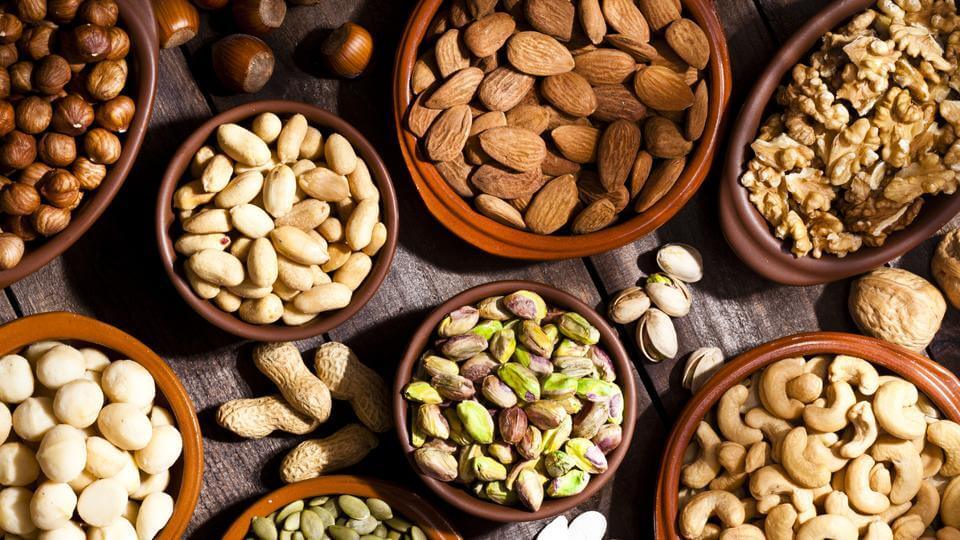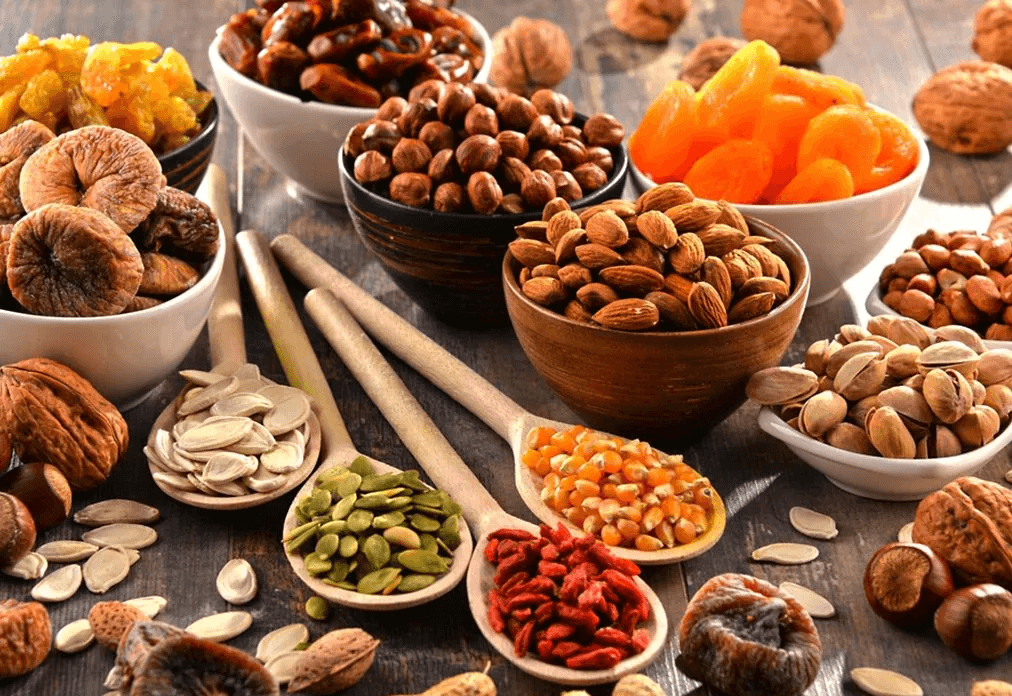Introduction:
Dried fruits are a delicious and nutritious category of food that have been enjoyed for centuries. With their concentrated flavors, natural sweetness, and extended shelf life, dried fruits provide a convenient and healthy snack option. In this extensive article, we will embark on a comprehensive exploration of dried fruits, covering their history, methods of drying, nutritional value, health benefits, culinary uses, and popular varieties.
- Historical Significance:
The preservation of fruits through drying dates back thousands of years, originating from ancient civilizations that sought methods to preserve the bounty of harvests and ensure a food supply during leaner times. Various drying techniques, such as sun drying, air drying, and dehydration, were employed by different cultures across the globe. Dried fruits gained prominence as a staple food, travel provisions, and luxury treats.
- Drying Techniques:
a) Sun Drying: Sun drying is one of the oldest and simplest methods of preserving fruits. Fruits are spread out on trays or racks in direct sunlight and left to dry naturally. This traditional method can take several days or even weeks, depending on the climate.
b) Air Drying: Air drying involves placing fruits in a well-ventilated area to allow moisture to slowly evaporate. It is a method often used for specific fruits that may be sensitive to direct sunlight or require slower drying, such as figs or dates.
c) Dehydration: Dehydration involves using specialized equipment to remove moisture from fruits efficiently. This method utilizes controlled heat and airflow to speed up the drying process, resulting in fruits that retain their color, flavor, and nutritional value.
- Nutritional Value:
Dried fruits offer a concentrated source of nutrients, including vitamins, minerals, fiber, and antioxidants. While the nutrient composition varies among different dried fruits, they generally retain many of the beneficial qualities found in fresh fruits. Dried fruits are rich in dietary fiber, which aids in digestion, promotes satiety, and helps regulate blood sugar levels. They are also packed with essential vitamins and minerals such as potassium, iron, and vitamin C.
- Health Benefits:
a) Fiber and Digestive Health: The high fiber content in dried fruits supports a healthy digestive system by promoting regular bowel movements and preventing constipation. Fiber also helps maintain a feeling of fullness, contributing to weight management and reducing the risk of overeating.
b) Antioxidants: Dried fruits contain various antioxidants, including phenolic compounds, which help protect against oxidative stress and reduce the risk of chronic diseases such as heart disease, certain cancers, and age-related macular degeneration.
c) Nutrient Density: Dried fruits are nutrient-dense, meaning they provide a high concentration of vitamins and minerals in a relatively small portion. Incorporating dried fruits into a balanced diet can help meet daily nutrient requirements and contribute to overall well-being.
d) Heart Health: Some dried fruits, such as raisins, prunes, and dried apricots, contain potassium, which supports heart health by regulating blood pressure and reducing the risk of cardiovascular diseases.
e) Bone Health: Dried fruits, such as dried figs and prunes, are rich in calcium and magnesium, essential minerals for bone health. Including these fruits in the diet can help support strong bones and prevent conditions like osteoporosis.
f) Energy and Endurance: Dried fruits provide a natural source of energy due to their carbohydrate content, making them an excellent choice for athletes or individuals needing a quick energy boost.
- Culinary Uses:
Dried fruits have a versatile nature and can be used in a wide range of culinary applications. They add sweetness, texture, and flavor to both sweet and savory dishes. Some popular uses of dried fruits include:
a) Snacks: Dried fruits can be enjoyed as standalone snacks, offering a natural and healthier alternative to processed snacks. They are convenient for on-the-go consumption and provide a quick source of energy.
b) Baking and Desserts: Dried fruits are commonly used in baking to enhance the flavors and textures of bread, cookies, cakes, and pastries. They can be incorporated whole, chopped, or blended into fillings, frostings, or toppings.
c) Breakfast and Granola: Dried fruits are often added to cereals, granola bars, oatmeal, and yogurt bowls to enhance the taste and provide extra nutrients. They can be sprinkled on top or mixed into the base for added sweetness and texture.
d) Salads and Savory Dishes: Dried fruits, such as cranberries, apricots, or cherries, bring a touch of sweetness and tang to savory dishes like salads, rice pilafs, stuffings, and tagines. They add complexity and balance to the overall flavor profile.
e) Chutneys and Relishes: Dried fruits can be simmered with spices, vinegar, and sweeteners to create flavorful chutneys and relishes. These condiments pair well with cheese, roasted meats, or grilled vegetables.
f) Trail Mixes and Snack Bars: Dried fruits are popular additions to trail mixes and snack bars, providing a burst of natural sweetness, texture, and nutrients. They complement nuts, seeds, and other snack ingredients.
- Popular Varieties:
a) Raisins: Raisins are dried grapes, available in different varieties such as Thompson seedless, Sultana, and Muscat. They are widely used in baking, snacking, and cooking.
b) Dates: Dates are sweet, chewy fruits with a rich caramel-like flavor. They are consumed dried or fresh and are common in Middle Eastern and Mediterranean cuisine.
c) Apricots: Dried apricots have a vibrant orange color and a sweet-tart flavor. They are often used in baking, snacking, and as an ingredient in savory dishes.
d) Figs: Dried figs have a unique texture and a sweet, honey-like taste. They are enjoyed as a snack, used in baking, or incorporated into savory dishes.
e) Prunes: Prunes, also known as dried plums, have a sweet and slightly tangy taste. They are revered for their digestive health benefits and are often consumed as a standalone snack or used in baking.
f) Cranberries: Dried cranberries are tart and slightly sweet, providing a burst of flavor. They are widely used in trail mixes, baking, and as a topping for salads and desserts.
g) Mangoes: Dried mangoes offer a tropical flavor and a chewy texture. They are a popular snack and can be used in desserts, smoothies, or chutneys.
h) Pineapple: Dried pineapple has a sweet and tangy taste, making it a favorite addition to snack mixes, trail mixes, and tropical-inspired dishes.
i) Cherries: Dried cherries are tart and slightly sweet, often used in baking, snacking, or as a topping for cereals, yogurt, and desserts.
Conclusion:
Dried fruits are a timeless and versatile category of food that offers a host of health benefits, culinary opportunities, and a delicious way to enjoy the natural goodness of fruits. From their historical significance to their various drying methods, nutritional value, and culinary uses, dried fruits have captivated people around the world for centuries. Whether enjoyed as a snack, added to recipes, or incorporated into diverse cuisines, dried fruits continue to bring joy, flavor, and nutritional benefits to our lives. With their convenience, long shelf life, and concentrated nutrients , dried fruits are a remarkable addition to a balanced and wholesome diet.









